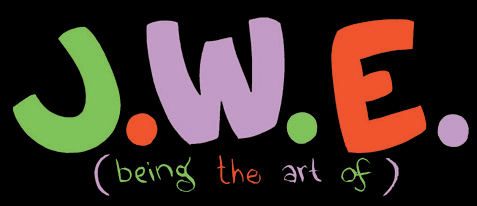
“I yam what I yam!” Albert H. Eaton at home, enjoying a smoke.
My paternal grandfather, Albert H. Eaton, was born in England, in 1899, one of five boys, three whom died in the muddy trenches of World War I. A fourth, Merlin, having survived the terrible war, soon thereafter fell to his death, having been perched high on a factory chimney.
Albert was a man of limited stature, strutting about on bandy legs, always a cigarette, cigar, or pipe wagging beneath his bulbous nose. Given to larger-than-life episodes, he found himself a semi-professional tennis player, a golfer, an operatic tenor, a stage singer, even a yodeler in Harry Lester’s Hayseeds, an American novelty cowboy band. Once, in a newspaper review of a local singing engagement, he was referred to as “the man with the voice of an angel, but the face of a clown.” A devoted Mason, and man of the church, he spent much of his working life driving about the countryside in a van, delivering meat to the homes of Cheshire, a small city located in the industrial north of the country, a short distance from the seaside town of Liverpool and the Welsh border.
Mainly through his own embellishment, my grandfather was a larger-than-life character, his physical likeness to Elzie Segar’s famous sailor barely a match for his cartoon-worthy histrionics and habitual boasting. Born with a deep depressive inclination, and a short temper, he was often at the center of many a conflagration, some humorous, some not. As a young child, I witnessed him standing drunk in a neighbor’s flowerbed, attempting to serenade the lady of the house, a soap opera actress. Another time I witnessed him leap the width of a ping pong table while chasing my older brother, angry blood in his eyes. I also recall him shutting himself in his room for days, lost in the dark throes of his undiagnosed malady. This was early summer, 1989, only a couple of years before he died, leaving the world as a vibrant, yet emotionally-scarred ninety two year-old.
It was during this time, a final visit to see his only child’s family in the United States, that I encountered him one afternoon, sitting on the living room couch of my parent’s home, the Sunday paper spread across his lap. Open before him was the color comics section, specifically the fan art portion of the Teenage Mutant Ninja Turtles feature. He was regarding it like some unrecognizable weed taken root in his vegetable patch. I sat down and began to engage him in a discussion about newspaper comics, what he remembered from his youth, what he didn’t. Soon, with only a little encouragement, he and I were drawing our own versions of the popular pizza-eating characters, he with a shaky hand, his pipe held fast between his National Health dentures. From there, he was off, drawing characters of his creation, some which I later realized were portraits of himself and his newest granddaughter. I asked him to label them and then carefully slipped them away in an envelope, which I’ve kept to this very day.
I’d now like to present these uniquely primal cartoon drawings, the only art I ever knew my grandfather to create, beyond his broadly-drawn life, that is.

Albert's Leonardo, line reminiscent of late-period Schulz.

An old man, with beard and cigar. Apparently not a self-portrait.

A rendering of his great granddaughter, Jessica.

A self-portrait, revealing the deft insight of an untested cartoonist.

Finally, the man himself, in his natural element, singing for guests in his home.


 ARRR! Uh-oh, it looks like the teenage Clark Kent is playing Fay Wray to a King Kong-sized Superboy. It’s hard to beat just about any issue of the Superman titles from the 60s for their sheer lunacy and constant desire to reassign the familiar Super logo. From Superboy #142, October 1967, published by DC Comics, original art by George Papp and Frank Springer.
ARRR! Uh-oh, it looks like the teenage Clark Kent is playing Fay Wray to a King Kong-sized Superboy. It’s hard to beat just about any issue of the Superman titles from the 60s for their sheer lunacy and constant desire to reassign the familiar Super logo. From Superboy #142, October 1967, published by DC Comics, original art by George Papp and Frank Springer.















